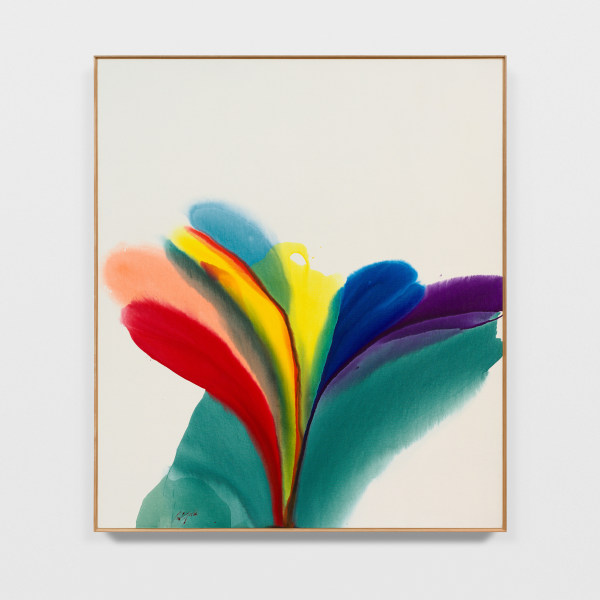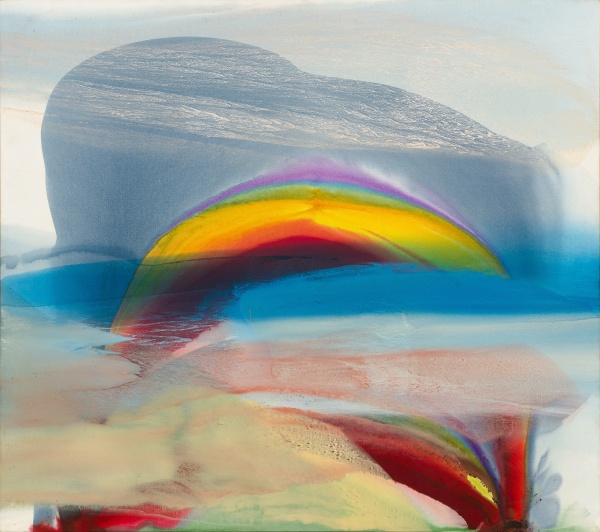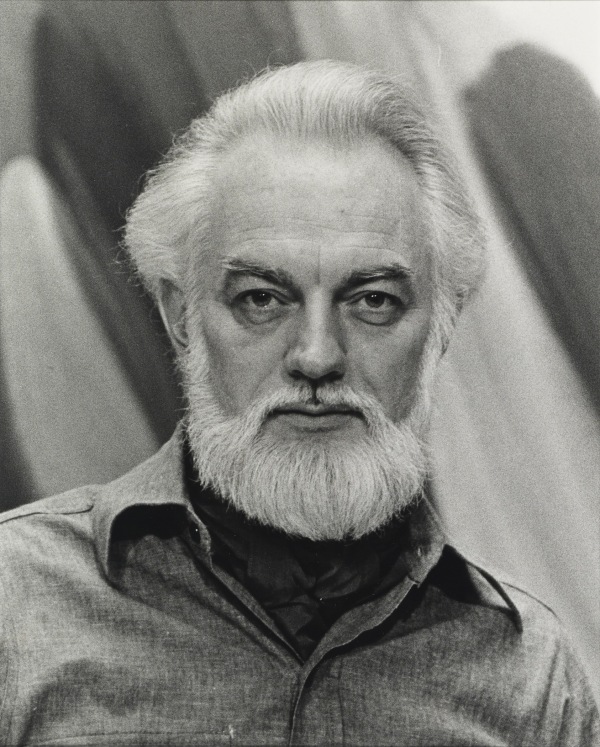Paul Jenkins
-
 Paul JenkinsPhenomena Umbra1982Watercolour on paper31 ¼ x 43 ¼ in. (79.4 x 109.9 cm)
Paul JenkinsPhenomena Umbra1982Watercolour on paper31 ¼ x 43 ¼ in. (79.4 x 109.9 cm)
Framed: 33 x 45 ½ in. (83.8 x 115.6 cm) -
 Paul JenkinsPhenomena Damned Fool1977Watercolour on paper43 ¼ x 31 in. (109.9 x 78.7 cm)
Paul JenkinsPhenomena Damned Fool1977Watercolour on paper43 ¼ x 31 in. (109.9 x 78.7 cm)
Framed: 45 ½ x 33 in. (115.6 x 83.8 cm) -
 Paul JenkinsPhenomena High Alter Wall1977Acrylic on canvas75 x 150 in. (190.5 x 381 cm)
Paul JenkinsPhenomena High Alter Wall1977Acrylic on canvas75 x 150 in. (190.5 x 381 cm) -
 Paul JenkinsPhenomena Length of the Wind1976Acrylic on canvas73 ½ x 63 ½ in. (186.7 x 161.3 cm)
Paul JenkinsPhenomena Length of the Wind1976Acrylic on canvas73 ½ x 63 ½ in. (186.7 x 161.3 cm) -
 Paul JenkinsPhenomena Noh Veil1969Acrylic on canvas39 ⅛ x 39 ⅛ in. (99.1 x 99.1 cm)
Paul JenkinsPhenomena Noh Veil1969Acrylic on canvas39 ⅛ x 39 ⅛ in. (99.1 x 99.1 cm) -
 Paul JenkinsPhenomena Continental Drift1962Acrylic on canvas39 ¼ x 58 ¼ in. (99.7 x 148 cm)
Paul JenkinsPhenomena Continental Drift1962Acrylic on canvas39 ¼ x 58 ¼ in. (99.7 x 148 cm)
We see one thing, but are never one. We are many things, but gravitate toward the single point. It is an acknowledgement of the variables which make the plural ever present.
Paul Jenkins (b. 1923, Kansas City, Missouri, d. 2012, New York, New York) was an American painter who is celebrated for his dynamic abstractions in oil, acrylic, and enamel. His paintings are characterised by their masterfully controlled, multilayered washes of pigment that meet on canvas in oceanic pools and eddies. While the artist’s work was initially received in the terms of American Abstract Expressionism, his sustained, rigorous inquiries into the physiological and spiritual aspects of colour, what the artist termed its “phenomena,” opened it to new avenues of expression that would outlast numerous movements throughout his six-decade career.
Coming to artistic maturity in New York at Abstract Expressionism’s height, Jenkins befriended many of the movement’s leading figures before decamping to Paris, which would serve as his second base of operations for the rest of his life. In Paris the painter established the conditions for his now-celebrated process, in which pigments are coaxed along the surface of a canvas that has been primed and buffed to a silken plane. By manipulating the angle of the surface on which paints traveled and by guiding their movements with an ivory knife, Jenkins produced a body of work that is striking for the singularity of its maker’s conviction while evidencing his spiritual restlessness and continual seeking.










